First step
towards the analysis
of dreams.
We have seen how certain myths, which affirm the existence of a universal language, resist the wear and tear of time. We then asked ourselves about dreams whose images could constitute a language that would be the last vestige of this universal language. It would concern all living sentient beings [see : Universal language].
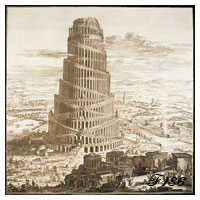
We then became interested in evolution, which led us progressively from the primordial elements (hydrogen, oxygen, carbon) to evolved organisms in order to understand how their mode of communication had adapted [see : Evolution-in french]..

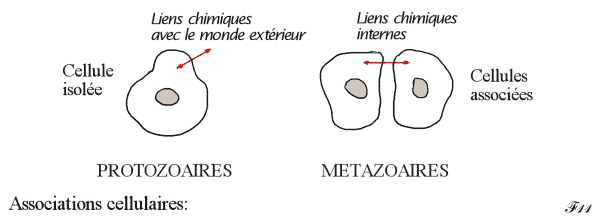
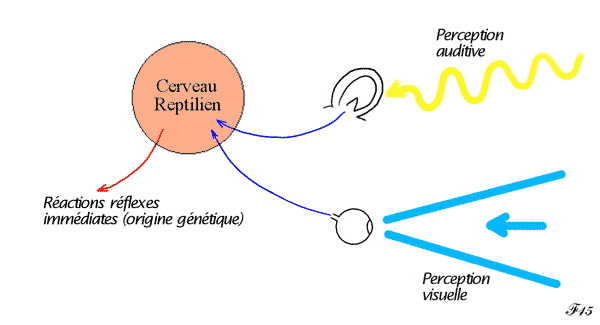
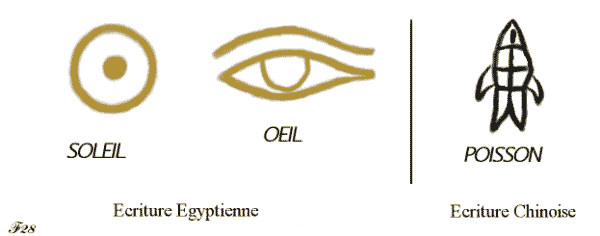
Representation of reality by images.
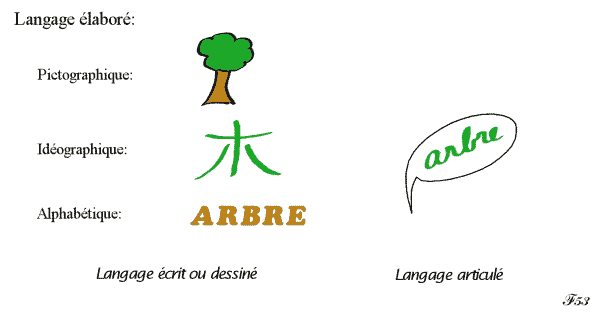
Transformation of images of reality into symbolic representations,
and then into symbols, the carriers of elaborate language.
and then into symbols, the carriers of elaborate language.
However, all this evolution was based on the evolution of the brain.
How had this brain evolved over millions of years to adapt to a constantly changing environment, while retaining the archaic and a priori useless functioning of the dream ?
Dreaming appeared to be linked to a particular brain function called REM sleep, which is only activated at night when conscious control is lost. This REM sleep originates in a region between the emotional limbic system and the lowest areas of the brain stem. [see : Nervous system-in french]. The hypothalamus plays an essential role .[see : REM sleep and hypothalamus-in french].
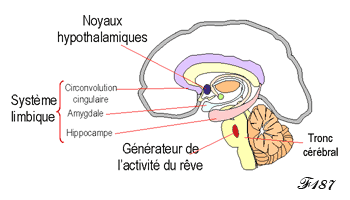
Generator of dream activity.
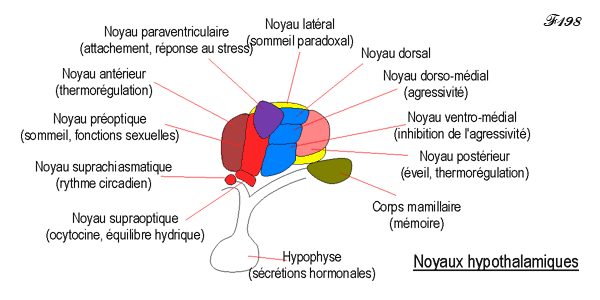
Hypothalamus.
What could be the causes of REM sleep ?
The evolution of species and their brain structures has provided us with answers.
REM sleep only occurs at night when mental control, linked to living in a community, ceases.
Furthermore, the lowering of brain temperature has allowed us to say that this function originated in cold-blooded species (poikilotherms), with purely instinctive reactions, in which REM sleep is difficult to distinguish.
Could this not be an instinctive nervous function, originating from this period of evolution, which would remain today in mammals and birds ?
Moreover, in the brain, the transition from poikilothermy to homeothermy occurred at the same time as the transition from neurogenesis to an associative mechanism between neurons . [see : neurogenesis-in french].
Poikilotherms Homeotherms
Emergence of REM sleep
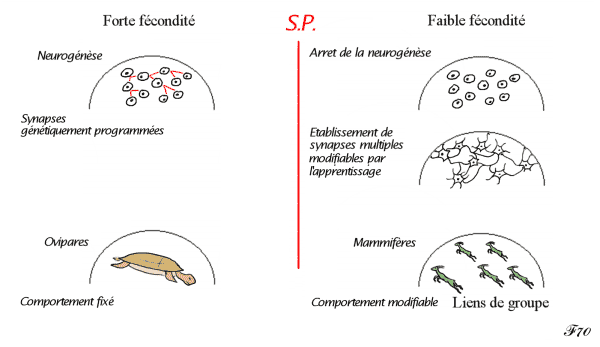
This is how we were able to envisage the conditions under which dreams appear during a 24-hour cycle.
- During wakefulness the frontal cortex inhibits functions that are not adapted to environmental conditions. In humans, these environmental conditions are primarily social and exclude all instinctive behaviour.
- During sleep, the control of the frontal cortex ceases, while the lowering of the brain temperature allows the onset of REM sleep. Brain functions related to individual instinctive functioning can then be expressed [see : Brain temperature-in french].
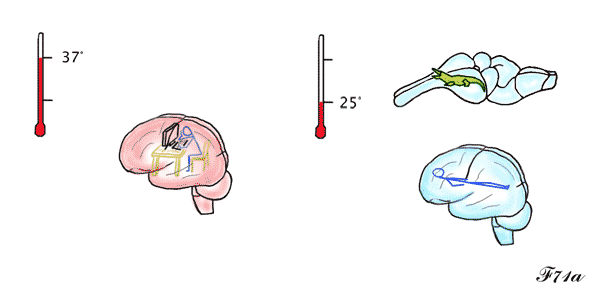
Lowering of brain temperature during REM sleep.
The resting of the frontal cortex thus makes it possible to understand that the dream reveals an attempt at dialogue from our "unconscious" to our everyday consciousness [see : dialogue-in french].
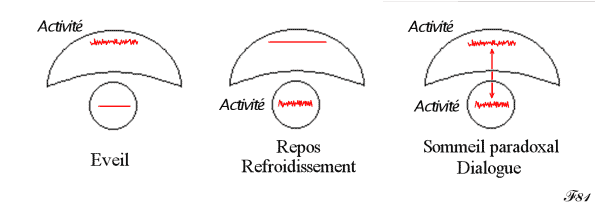
Understanding how language has evolved from the animal that feels and acts, to the human being who expresses what he feels through speech, then becomes possible [ [cf : Language].
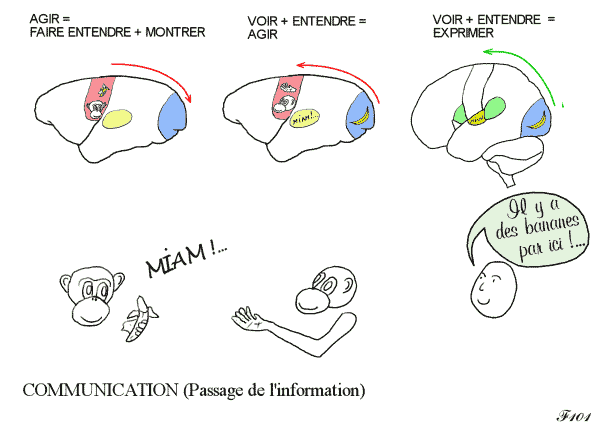
We were then able to define the existence of three modules in the human brain:
- a central module that allows us to feel, speak and act,
- a "lower" module that triggers individual reactions to events,
- a "higher" model that controls reactions according to the needs of life in a community.
[see : the three modules of thought-in french].
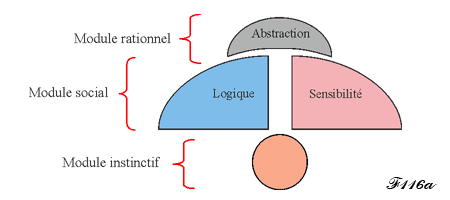
We are now going to look at the way in which man, according to the times and the knowledge acquired, has managed to interpret his dreams. Perhaps we will find some useful elements for making sense of the content of dreams
L'impasse : (in french)
The dead end : (soon)



